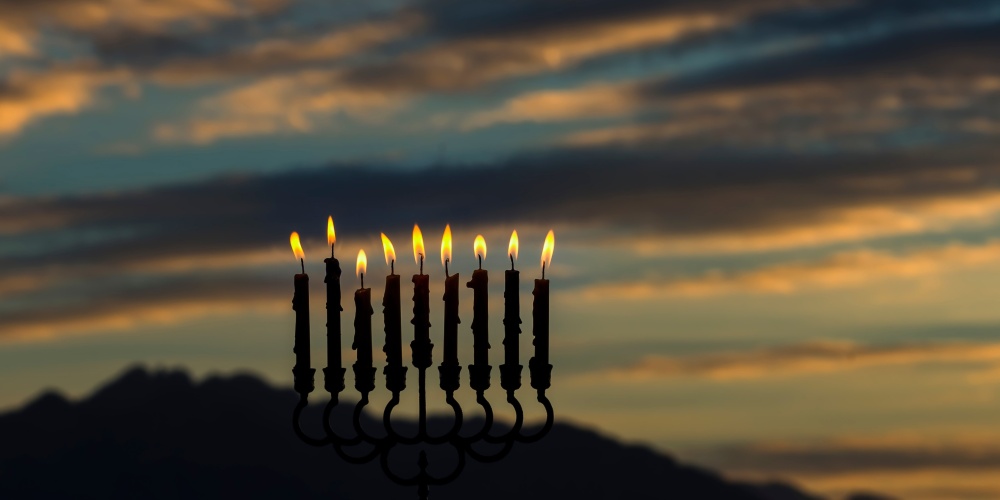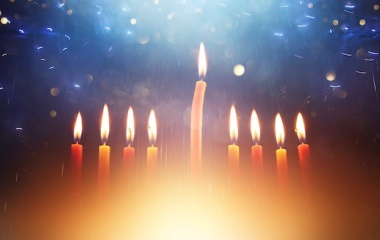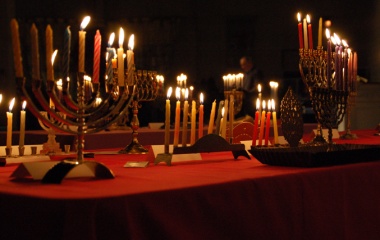
Ask any child – or adult for that matter – how we celebrate Chanukah and chances are beyond pretty good that the answer will be by lighting the menorah every night (well, maybe the child will add something about getting gifts). Yet as prominent a role as lighting the menorah plays today, that is not – or at least was not - the main focus of Chanukah. Of the three primary sources describing the events of Chanukah – the Book of Maccabees, Megillat Taanit, and Al HaNissim – only that of Megillat Taanit makes mention of the miracle of oil. But a close reading of even this text makes clear that the main focus of the Chanukah holiday lay elsewhere.
“The Sages taught: On the twenty-fifth of Kislev, the days of Chanukah are eight. One may not eulogize on them and one may not fast on them. When the Greeks entered the Sanctuary, they defiled all the oils that were in the Sanctuary. And when the Hasmonean monarchy overcame and emerged victorious over them, they searched and found only one cruse of oil that was placed with the seal of the High Priest. And there was sufficient oil there to light only one day. A miracle occurred and they lit from it for eight days. In another year, they instituted and made them holidays with Hallel and Hoda’ah, praise and thanksgiving” (Shabbat 21b, quoting from Megillat Taanit).
It is Hallel effected through the recital of Tehillim, and Hoda’ah effected through the recital of Al HaNissim, not the lighting of the menorah that is the mode of celebrating the holiday. Rashi spells this out as he explains that “It is not that work is forbidden on them, as they were fixed only with regards to reciting Hallel and saying Al HaNissim, in [the blessing of] thanksgiving”. Neither Hallel nor Al HaNissim make mention of the miracle of the oil.
Al HaNissim is focused on the military victory and while it makes mention of the lighting of the menorah it makes no mention that it miraculously lit for eight days. Its lighting was made possible by the military victory and evicting the Greeks from the Temple.
Hallel was instituted by the Prophets "that they recite it on every appropriate occasion; and for every trouble, may it not come upon them. When they are redeemed, they recite it over their redemption" (Pesachm 117a). If it is Hallel and Hoda’ah that are the ways to celebrate Chanukah why does our understanding of Chanukah seem to differ?
In any event, it is not at all clear why one would make a holiday because oil lasted for an extra seven days. Had the oil burned only for one day would not the dedication of the Temple be reason enough to celebrate? Does it really matter if we would have had to wait a week to get more oil for the Menorah? Does it really matter if the oil in the Menorah is lit for one, eight or eighteen days? Chanukah enabled the restoration of the complete Temple service and it is that which we celebrate, not specifically the lighting of the Menorah. The holiday is called Chanukah, meaning dedication, because we are celebrating the rededication of the Temple. The lighting of the Menorah is just one of the many activities that took place in the Temple – and a relatively small one at that. It was lit out of site of the vast majority of people as the Menorah was located in the kodesh, the chamber just in front of the Kodesh HaKodashim, the Holy of Holies, and only kohanim could enter.
It seems that the lighting of the Chanukah candles is a post-exilic development. When Chanukah originally happened, i.e. when the Maccabees miraculously defeated the Greeks and rededicated the Temple, it was celebrated as day of Hallel and Hoda’ah, praise, song and thanksgiving. It was but one of many - 35 in total - holidays instituted during the second Temple period to acknowledge and celebrate great events in Jewish history. These holidays are the basis of Megillat Taanit, days on which one was not allowed to fast or offer eulogies.
With the restoration and rededication of the Temple the Menorah could now be lit – and was done so daily in the Temple. There would however have been little reason to institute the lighting of the menorah in each and every home. Menorah lighting was a mitzva observed in the Temple and hence not in the home. Much of what was performed in the Temple was specifically prohibited to be done anywhere else – Korbanot being just the most obvious example. We do not point at the shankbone during the seder as we recite Pesach Zu, lest one confuse the shankbone with the actual korban Pesach. With such an attitude there would surely be great hesitancy to suggest people light a Menorah in their home. When the lighting of the menorah did become part of our tradition, it is not by accident that our “Menorah” was an eight-branched candelabrum[1].
The Talmud notes the obvious: that with the destruction of the Temple the holidays of Megillat Taanit were abolished (Rosh Hashanh 19b). To celebrate great events of the Second Temple period when there is no Temple would be meaningless at best. If anything, they should be observed as days of mourning. Yet our Sages made two exceptions.
Chanukah and Purim are to be continued to be observed despite the loss of the Temple and exile. With a stroke of genius, our Sages converted our home into a miniature Temple. We would pour salt on our challah because salt was poured on all sacrifices; we would ritually wash our hands before eating just as the kohanim in the Temple did. And we would light the menorah giving the Jews hope that they would one day return to the Land – as thankfully we have – and restore the Temple.
Our Sages intuited that it would be a long and at times bitter exile[2]. There would be much darkness but the light of the Jewish people, the light of Torah would not be extinguished. For eight nights during the darkest time of the year we reminded ourselves that Jewish sovereignty and religious freedom would one day return. And that is something worthy of Hallel and Hoda’ah.
___________________________________________________________
[1] This could answer the famous question of the Beit Yosef, Rav Yosef Karo, as to why Chanukah is eight days and not seven to correspond to the days of the miracle. A seven-day holiday would require a seven-branched candelabrum, something the rabbis wanted to avoid.
[2] This is one of the reasons the Sages were convinced Rabbi Akiva erred in his assessment that Bar Kochba was the Messianic king.



